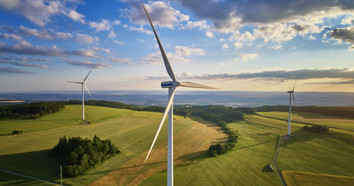Wind turbines are a critical aspect of renewable energy generation and are used extensively across the world. These sleek machines harness the wind's power to produce electricity, which is then used to power homes, businesses, and industries. However, like any piece of equipment, wind turbines are susceptible to damage caused by extreme weather conditions.
Whether it comes in the form of heavy rains, blistering heat, gusty winds, or icy winters, extreme weather can significantly impact the functionality of your wind turbine, leading to costly repairs and downtime. Learn how extreme weather can impact your wind turbine and explore practical tips to help you protect your investment.
High Winds
Wind turbines are designed to withstand high winds, but severe gusts can still cause significant damage. Strong winds can damage rotor blades, causing them to bend, break, or even damage the turbine's structure, leading to a complete shutdown. This makes it crucial to invest in turbines that can withstand extreme winds or install wind turbines in areas with lower wind speeds. It's also important to inspect the turbine blades regularly and replace them if they're damaged.
Heavy Rains and Lightning
Heavy rains can cause electrical short circuits and harm essential components. Lightning strikes can also cause extensive damage to your wind turbine, including damage to the blades, tower, and control systems. To mitigate these risks, invest in a quality lightning protection system that can protect your turbine from strikes.
Extreme Heat
Extreme heat can also impact the functioning of your wind turbine, leading to increased wear and tear on components such as the gearbox and generator. Overheating in these areas can cause critical damage, resulting in expensive repairs and downtime. Regular maintenance and inspection of your wind turbine's components can help identify potential issues and mitigate the risk of damage caused by extreme heat.
Icy Conditions
Winter can bring frigid conditions, leading to ice build-up on the turbine blades and reduced efficiency. Icy conditions can also cause damage to the turbine's mechanical components, particularly the gearbox. Invest in anti-icing systems to protect your turbine from these effects.
Sandstorms and Dust
In areas with sandy or dusty conditions, sandstorms can cause extensive damage to wind turbines. Sand and dust particles can cause increased wear and tear on mechanical components, such as the bearings, leading to increased downtime and expensive repairs. Regular cleaning and maintenance of your wind turbine's components can help mitigate these problems. If needed, investing in wind turbine lubricants can further reduce friction caused by dust.
Mitigate the Risks of Extreme Weather
Extreme weather conditions can significantly impact your wind turbine. Regular maintenance and inspection of your installation's components can help identify potential issues and mitigate the risk of damage caused by extreme weather. With proper care and attention, wind turbines can continue to provide renewable energy for many years to come.

